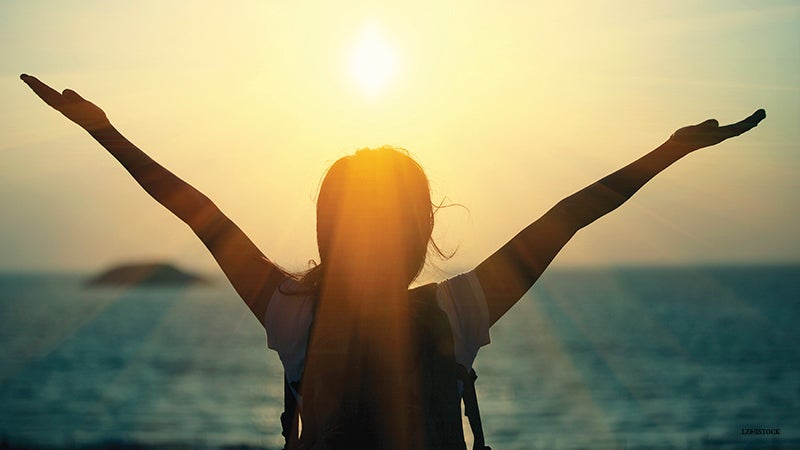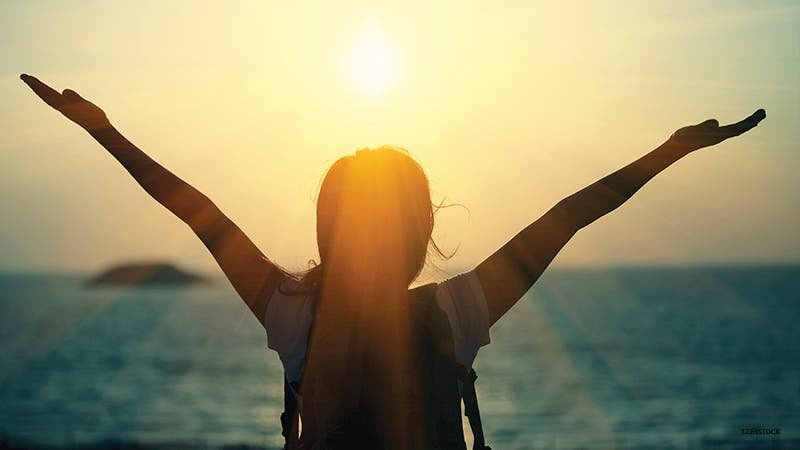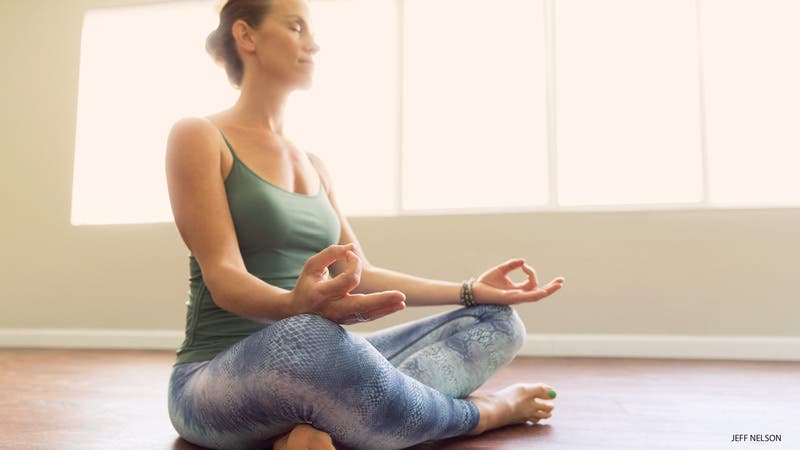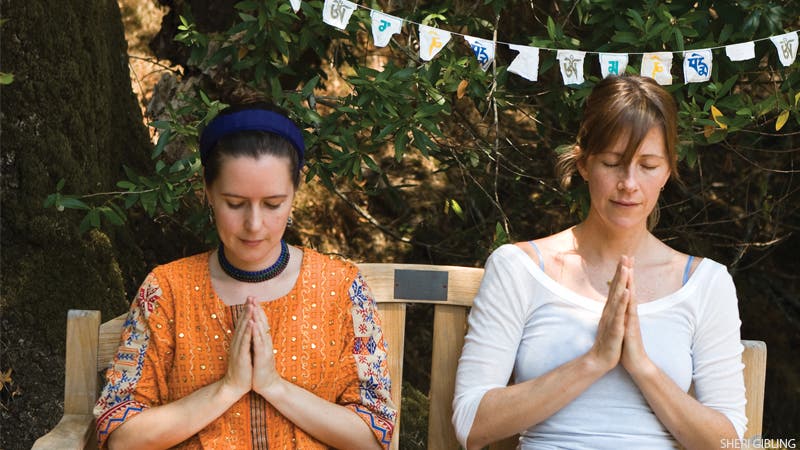Use Meditation to Find Freedom and Lose Limitations


When we begin to practice meditation, we come to recognize the sense of limitation that has been imposed on our lives.
Twenty-five years ago, a small group of us who wished to begin a meditation center went to check out the Catholic novitiate we’d heard was for sale in the town of Barre, Massachusetts. On that first trip we caught a glimpse of a public monument that had the Barre town motto engraved upon it: “Tranquil and Alert.” It seemed perfect–a place with that motto could certainly be home to a meditation center.
We later learned that the novitiate’s main building was once the private home of a Colonel Gaston, at one time the lieutenant governor of Massachusetts. Ironically, this Colonel also had a motto, which we discovered in a volume detailing the history of Barre. His credo: “You should live every day so you could look any damn man in the eye and tell him to go to hell.”
See also Find Your Meditation Style With These 7 Practices
Each of us, like Colonel Gaston and Barre, has a motto. We have some maxim, some encapsulated philosophy that expresses what we dedicate our lives to, what we aspire to, where our energy goes, what we hold most precious. Our motto can be a nugget of our own truth, one that centers us and keeps us focused on the things we care about passionately. Often, though, our motto tends to be rather timid. The extent of our aspiration and dedication falls short of our capabilities. We confine and constrain ourselves, even in the credos by which we live. When we practice meditation, we often come to recognize the sense of limitation that has been imposed upon our lives. We haven’t allowed for the possibility of huge achievement because we’ve been conditioned to be content with meager results.
The beauty of meditation practice is that we finally take notice of our conditioning, including the tacked-on constraints. We see these restrictions are not inherent to our being, nor are they expressions of our true nature; just as they are conditioned, so too can they be reconditioned. One of my greatest teachers, Nyoshul Khen Rinpoche, asked something like this: “Why is it that your aspiration is so puny? Why not aspire to be a really free being? Why not aspire to be liberated for the sake of all beings? Why not see your life in a much bigger context? What’s holding you back?”
See also 10 Meditations You’ll Want to Keep Handy

These are questions to contemplate. What does hold us back? Mainly we are hindered by routine and conditioning, not “reality.” Often our sense of limitation is a habituated response to the day-to-day events of our lives, created by our own minds. Our idea of who we are and what we’re capable of is something that can change: We can continue to live within the bounds of our conditioning, or we can change and begin to live in a new way. The act of meditating is a challenge to that habituated construct of limitation.
Just the simple fact of our intention and motivation to practice brings us head-to-head with our tightly held assumptions about who we are. As one of my teachers said, “The most important part of the sitting practice the moment you sit down.” That’s when we affirm that we can care about ourselves in a deeper way, expand our sense of possibility, and widen the image of our potential. In sitting to meditate we ask ourselves the most important question: “Why not?” Why not continue to open and expand? Why not break out of the old ways of seeing ourselves and what we can do? Our aspirations can grow so we can finally include ourselves in an image of freedom, in the image of a Buddha.
The essential strengths we cultivate in meditation practice are the willingness to explore, the discovery of compassion for ourselves, the honest examination of our minds, the development of faith in our own potential, and the openhearted allowance of our transformation. When we practice the teachings, our effort is not about somebody else–the Buddha or a great teacher–it’s about us. Our meditation is about testing and exploring the direct reality of our experience, moment by moment. Otherwise, our effort in meditation becomes just another story we tell, not our true practice of freedom.
When I initially went to India in 1970, I arrived with the clear intention to meditate. I had studied Asian philosophy at college and thought I understood what I was getting into. When my first teacher began to talk about “dependent origination,” I smiled. Great, I thought. I knew all about this. I understood it. The core concept in Buddhism, dependent origination, provides a straightforward description of how our world becomes created–both our personal reality as well as the universe itself. Simply put (and this is not a simple concept), we tend to respond toward the arising phenomena of existence–seeing, hearing, smelling, touching, tasting, and thinking–with clinging, aversion, or delusion. From these first mechanical responses, we push one experience away and grasp onto the next, and then don’t pay attention to the experience after that at all. When we meditate, we step in to intervene in the driven, unfulfilling nature of this process. We take note of both the arising phenomena and of our reaction to them, and with practice we learn not to constantly react. We learn not to separate from a painful experience, as though by doing so we could seize control and keep all pain at bay. We learn not to hold on to something else that’s more pleasurable, as though we could keep it from changing. And we learn not to doze off when our experience is neither strikingly pleasant nor unpleasant. We learn to be present with everything: awake, connected, aware. This training enables us to take our spiritual dedication and bring it to life in a real way, in this moment.

As I sat in my first intensive meditation retreat in India, hearing about dependent origination, the flow of my thinking went like this: “I feel so inspired by this teaching. I feel so at home here. I just wish this knee pain would go away. Yes, I’m glad I came to India and as soon as this knee pain leaves, everything will be fine.” And my teacher would proceed to elaborate this particular doctrine, and I would think, “That is so true. I understand. Go away knee pain. This is too great of an experience for knee pain.”
It took me a long time to realize what my teacher–and the Buddha–were talking about was actually my knee pain. It was an experience in the present moment I had to deal with in a new way, a way consonant with my stated wish to transform my life. I had been so caught in the cycle of clinging, aversion, and delusion that I had forgotten what I was there for: to free myself from suffering. Caught in my fantasies, I had lost the patience, humility, and diligence necessary to practice meditation. And it is the practice of meditation that leads us to experience what lies underneath all that reflexive reaction–our Buddha-nature.
In describing the process of coming to freedom, the Buddha said that the mind becomes filled with qualities like mindfulness the same way a bucket is filled with water, drop after drop. Can we continue to stretch the boundaries of our aspirations and bring our minds to the cushion for the next drop? Freedom is experienced with every drop, as we transform what we choose to care about most deeply and how we choose to spend this precious life.
See also Daily Meditation Made Easy
About Our Author
Sharon Salzberg is the author of Faith (Riverhead Books, 2002). She lives in Barre, Massachusetts.